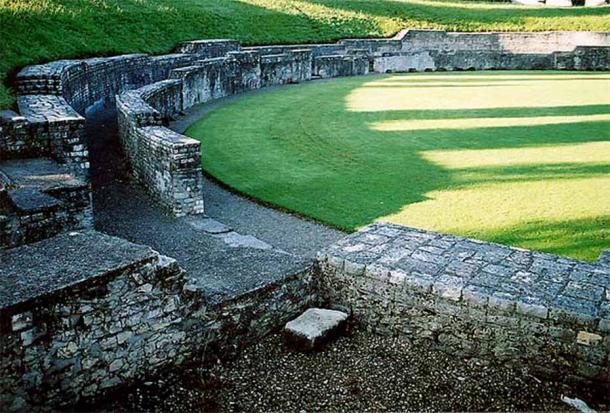
Swiss Archaeologists in Gebenstorf Find Unexpectedly Extensive Roman Site
Archaeologists in Switzerland have discovered a large Roman settlement in Gebenstorf in the Canton of Aargau. The area is slated for a major modern redevelopment and the race is on to preserve this piece of history before it is lost forever.
The excavation only began earlier this month and expected to find a small amount of Roman archaeology underneath the redevelopment site. The intention had been to conduct a relatively quick survey and dig at the 3,200 square meter (34,450 square foot) site, and recover all useful archaeology before the development could commence.
- Puzzling Roman-Era Remains Found in Switzerland
- Oldest Roman Camp of Northern Hispania Found in Portugal

The Roman remains at the Swiss site are both much larger and more extensive than had been previously believed (Archaeology News / Cantonal archeology, © Canton Aargau)
Archaeologists had known about a Roman presence in the area for a long time, as the site, known as “Steinacher” is only 2.2 km (1.4 miles) from the well known Vindonissa Roman legionary camp. However as the work progressed it became clear that there was something much larger and more important beneath the surface than anyone expected, reports Archaeology News.
Historical Clues and Unexpected Finds
There had certainly been evidence from the past which pointed to a large Roman presence at the site. Records as far back as the 17th century speak of Roman finds in the area, and smaller archaeological digs conducted from 2017 to 2023 seemed to hint at a large Roman complex of buildings there.
These residential buildings would also have made sense given what we know of the Roman housing plans, given the nearby Roman camp. The Romans employed a system they called “extra leugam” whereby buildings that housed civilians, as well as the cemetery for the legionaries, would be constructed at a certain distance from the army garrison.
- The Last Roman Amphitheater Ever Built Found Near Basel Switzerland!
- Examining the Impressive Ancient Roman Walls of Lugo

The site is near to the Swiss Roman legionary camp at Vindonissa with its famous late amphitheater (Roland Zumbühl / CC BY-SA 3.0)
The location of the Vindonissa cemetery is known, and it is found just to the west of the new site. It was here that Roman legionaries were taken from the camp for burial, some 2,000 years ago.
The first small digs at the site confirmed that Roman remains were present, revealing the ruins of Roman buildings and the foundations of walls, along with many smaller artifacts. However the finds are much more extensive than had been believed, and now a much more detailed excavation will be undertaken to document and recover them before they are destroyed to make way for a new underground parking garage.
The expanded excavations will take place in two stages: from April to November 2024 and March to May 2025, reports Arkeonews. The dig will first concentrate on the western area of the site this year, with the remaining building perimeter being made available for redevelopment in mid-2025.
But it is still too early to tell what may yet be uncovered under the new development. All archaeologists can say with certainty at this point is that the site is much larger than they had expected, a site which may yet contain something more to surprise everyone.
Watch this space.
Top Image: The Swiss site in Gebenstorf, and (inset) some of the unexpectedly large and extensive Roman walls found by the initial archaeology. Source: Archaeology News / Cantonal archeology, © Canton Aargau.
By Joseph Green















